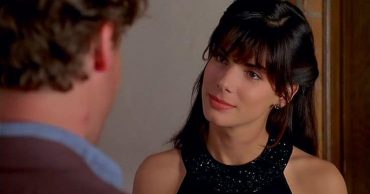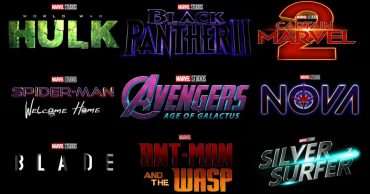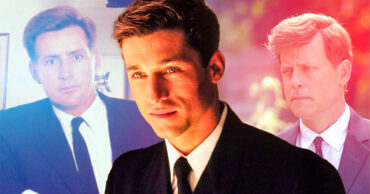
Has any filmmaker had a career path that mirrors that of M. Night Shyamalan? Sure, Orson Welles peaked early (as referenced in Superbad), but unlike Shyamalan, he didn’t go from being the next Spielberg to being a punchline. I refuse to believe that Shyalaman got lucky or was a talentless hack who tricked audiences with his twist endings; he’s a very intelligent, talented young man whose hubris and insecurities have resulted in a noticeable regression in the quality of his films. I’d like to think that there’s still some hope for Shyalaman’s career, but once the American public turns against you, it’s nearly impossible to regain your footing. Let’s take a look at Shyamalan’s rise and fall.
Shyalaman made two films, Praying With Anger and Wide Awake, that were released in 1992 and 1998, respectively, but it wasn’t until 1999’s The Sixth Sense that Shyalaman really made his mark. The Sixth Sense, written and directed by Shyalaman, was nominated for six Academy Awards, including Best Picture and Best Original Screenplay. Shyalaman had taken Hollywood by storm and was the new “it” director. Audiences and critics alike loved The Sixth Sense, which starred Bruce Willis, blended horror and suspense beautifully, and delivered a totally unexpected twist ending. Perhaps it was the success of The Sixth Sense that led Shyalaman to feature twist endings in his later films.
Up next for Shyalaman was Unbreakable, in which the writer/director was reunited with Bruce Willis. Personally, I think Unbreakable is Shyalaman’s best film. There’s a somber tone throughout the movie (which is enhanced quite a bit by Willis’ calm and melancholy demeanor), and Shyalaman clearly did his research before filming. In fact, many of the shots framed by Shyalaman look like they were taken directly out of the pages of a comic book, and the protagonist’s name – David Dunn – is a perfect superhero alias, a la Peter Parker, Bruce Banner, Scott Summers, etc. Once again, Shyalaman implemented a twist ending, and once again, it was quite effective. Unbreakable was not as critically acclaimed as The Sixth Sense, but it was a solid follow-up and Shyalaman’s stock in Hollywood continued to rise.
In 2002, Shyalaman gave us Signs, and it’s at this point when the director became somewhat polarizing. I like Signs; I think a lot of the negative comments regarding the film are retroactive attacks spawning from the public’s more recent dislike and disappointment with Shyalaman. The biggest complaint – and this one is tough to defend – is the absurdity of aliens traveling across the universe who are somehow unable to open pantry doors or determine that a planet that is 75% covered with a substance that is poisonous to them might not make the best destination. If you get hung up on these flaws, it’s tough to appreciate the movie’s finer points – notably, the presentation of faith versus coincidence and the way the film was shot. Up until the end, Shyalaman doesn’t show you the aliens save for quick glimpses, and leaving the appearance of the creatures to the viewers’ imaginations is a far more effective technique than simply showing a hideous-looking alien if you’re going for scares. Two shots that stand out in particular are the reflection of the alien in the television screen during the movie’s climax and, of course, the video footage (shot by Shyalaman himself) of the alien appearance at the Brazilian kid’s birthday party, which I have to believe is an homage to the famous “Bigfoot” footage. The ending of Signs wasn’t necessarily a twist, but it was twist-esque, and it’s at this point where critics and audiences started to view Shyalaman as a one-trick pony. Signs was commercially very successful, but according to most, a huge drop off from The Sixth Sense and Unbreakable.
https://www.youtube.com/watch?v=Kq_B_ukrGKo
While not nearly as implausible as Signs, 2004’s The Village was attacked for being completely unrealistic and far-fetched. Many were disappointed that the “monsters” in The Village didn’t actually exist, but they failed to appreciate that Shyalaman had in fact created an allegory about fear and the use of fear as a means to control. Shyalaman’s use of color in The Village is noteworthy, but more importantly – and this is often overlooked – he had succeeded in making a period piece, an extremely challenging feat for any director. Nevertheless, The Village’s ending was a twist ending and the label of “one-trick pony” for Shyalaman gained considerable legitimacy. At this point, Shyalaman had yet to make a truly abyssmal film, but his days as the new “it” director were long gone, and the public perception was that his movies were getting worse and worse.
I remember seeing the preview for The Lady in the Water right before Harry Potter and the Goblet of Fire, and when the words “A bedtime story by M. Night Shyalaman” appeared on the screen, there was a noticeable, very positive buzz in the packed theater. Surely, people were still excited about the prospect of another Shyalaman movie. Unfortunately, The Lady in the Water was universally panned and as much as you may dislike The Village or Signs, it paled in comparison to its predecessors. There wasn’t much to the story, and despite having a very good cast, Shyalaman’s hubris was front and center throughout this movie. For one, he cast himself as the writer of a piece that would change the way the world thinks and operates, but even worse was his portrayal of the movie critic character. Fed up with negative criticism from people less intelligent than himself, Shyalaman took a hard jab at movie critics, pulling no punches and without any semblance of subtlety. Not that The Lady in the Water would have been a good film sans the movie critic scene, but the inclusion of that scene completely detracted from the story. Shyalaman should have taken the high road, but instead, his frustration led him to lash out, making him look incredibly arrogant while simultaneously tarnishing his already below-par film. People HATE The Lady in the Water – and there are plenty of reasons to dislike this movie – but I believe Shyalaman’s holier-than-thou attitude that is associated with this movie helped alienate him from audiences to a degree previously unfathomable. The Lady in the Water didn’t feature a twist ending, but the movie was already so disappointing that it didn’t matter much. The sadder news, however, is that after The Lady in the Water, his stock somehow managed to plummet even further.
And then came The Happening. This 2008 preposterous movie is by far the low point in Shyalaman’s career, and it is simply astounding to think that this movie -widely considered one of the worst of the year – was made by the same guy who wrote and directed The Sixth Sense and Unbreakable. I am yet to read one positive comment regarding The Happening, and Mark Wahlberg – who was nominated for Best Supporting Actor for his role in The Departed – has been chastised along with Shyalaman for being a part of this awful, awful movie. You would think that Shyalaman cannot sink any lower, but that’s exactly what I thought after The Lady and the Water. That said, I still like his earlier films a great deal, and like I stated above, I don’t think he’s talentless. I think he’s lost, perhaps misguided, and his hubris has played a large part in his career freefall.
*For the record, I’m not even going to The Last Airbender or After Earth. I’m still rooting for him but perhaps the guy should stick to directing TV episodes of Wayward Pines.
 Follow Us
Follow Us





